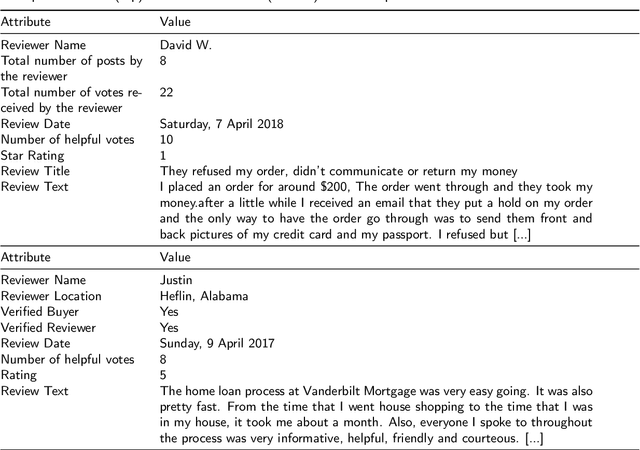Jiahua Du
Exploiting Review Neighbors for Contextualized Helpfulness Prediction
Jun 17, 2020



Abstract:Helpfulness prediction techniques have been widely used to identify and recommend high-quality online reviews to customers. Currently, the vast majority of studies assume that a review's helpfulness is self-contained. In practice, however, customers hardly process reviews independently given the sequential nature. The perceived helpfulness of a review is likely to be affected by its sequential neighbors (i.e., context), which has been largely ignored. This paper proposes a new methodology to capture the missing interaction between reviews and their neighbors. The first end-to-end neural architecture is developed for neighbor-aware helpfulness prediction (NAP). For each review, NAP allows for three types of neighbor selection: its preceding, following, and surrounding neighbors. Four weighting schemes are designed to learn context clues from the selected neighbors. A review is then contextualized into the learned clues for neighbor-aware helpfulness prediction. NAP is evaluated on six domains of real-world online reviews against a series of state-of-the-art baselines. Extensive experiments confirm the effectiveness of NAP and the influence of sequential neighbors on a current reviews. Further hyperparameter analysis reveals three main findings. (1) On average, eight neighbors treated with uneven importance are engaged for context construction. (2) The benefit of neighbor-aware prediction mainly results from closer neighbors. (3) Equally considering up to five closest neighbors of a review can usually produce a weaker but tolerable prediction result.
 Add to Chrome
Add to Chrome Add to Firefox
Add to Firefox Add to Edge
Add to Edge